Number Patterns Study Guide
What are Number Patterns?
Number patterns are sequences of numbers that follow a certain rule or relationship. These patterns can be found in various mathematical contexts, including arithmetic, geometric, and other types of sequences.
Types of Number Patterns
There are several types of number patterns, including:
- Arithmetic Patterns: These patterns involve adding or subtracting a constant number to each term to get the next term.
- Geometric Patterns: These patterns involve multiplying or dividing by a constant number to get the next term.
- Square Number Patterns: These patterns involve a sequence of numbers that are the result of multiplying a number by itself (e.g., 1, 4, 9, 16, 25...).
- Cubic Number Patterns: These patterns involve a sequence of numbers that are the result of raising a number to the power of 3 (e.g., 1, 8, 27, 64, 125...).
Finding the Rule of a Number Pattern
To find the rule of a number pattern, you can use the following steps:
- Look for the relationship between consecutive terms.
- Determine if the pattern is arithmetic, geometric, or another type of sequence.
- Write the rule as an equation or a set of instructions to generate the pattern.
Example
Consider the following number pattern: 3, 6, 9, 12, 15...
This is an arithmetic pattern with a common difference of 3. The rule can be expressed as: nth term = 3n, where n is the position of the term.
Practice Problems
Try solving the following problems to test your understanding of number patterns:
- Identify the type of pattern and find the rule for the sequence: 2, 4, 8, 16, 32...
- Determine the next three terms in the sequence: 5, 10, 20, 40, ...
◂Math Worksheets and Study Guides Sixth Grade. Estimation
Study Guide Estimation
Estimation  Worksheet/Answer key
Worksheet/Answer key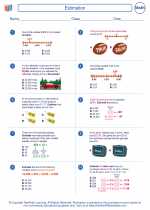 Estimation
Estimation  Worksheet/Answer key
Worksheet/Answer key Estimation
Estimation  Worksheet/Answer key
Worksheet/Answer key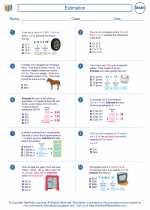 Estimation
Estimation  Worksheet/Answer key
Worksheet/Answer key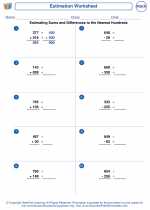 Estimation
Estimation  Worksheet/Answer key
Worksheet/Answer key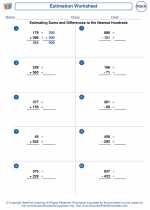 Estimation
Estimation  Worksheet/Answer key
Worksheet/Answer key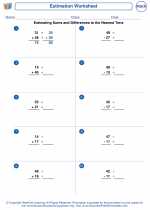 Estimation
Estimation 

 Worksheet/Answer key
Worksheet/Answer key
 Worksheet/Answer key
Worksheet/Answer key
 Worksheet/Answer key
Worksheet/Answer key
 Worksheet/Answer key
Worksheet/Answer key
 Worksheet/Answer key
Worksheet/Answer key
 Worksheet/Answer key
Worksheet/Answer key

The resources above cover the following skills:
Number and Operations (NCTM)
Compute fluently and make reasonable estimates.
Select appropriate methods and tools for computing with fractions and decimals from among mental computation, estimation, calculators or computers, and paper and pencil, depending on the situation, and apply the selected methods.
Develop and use strategies to estimate the results of rational-number computations and judge the reasonableness of the results.